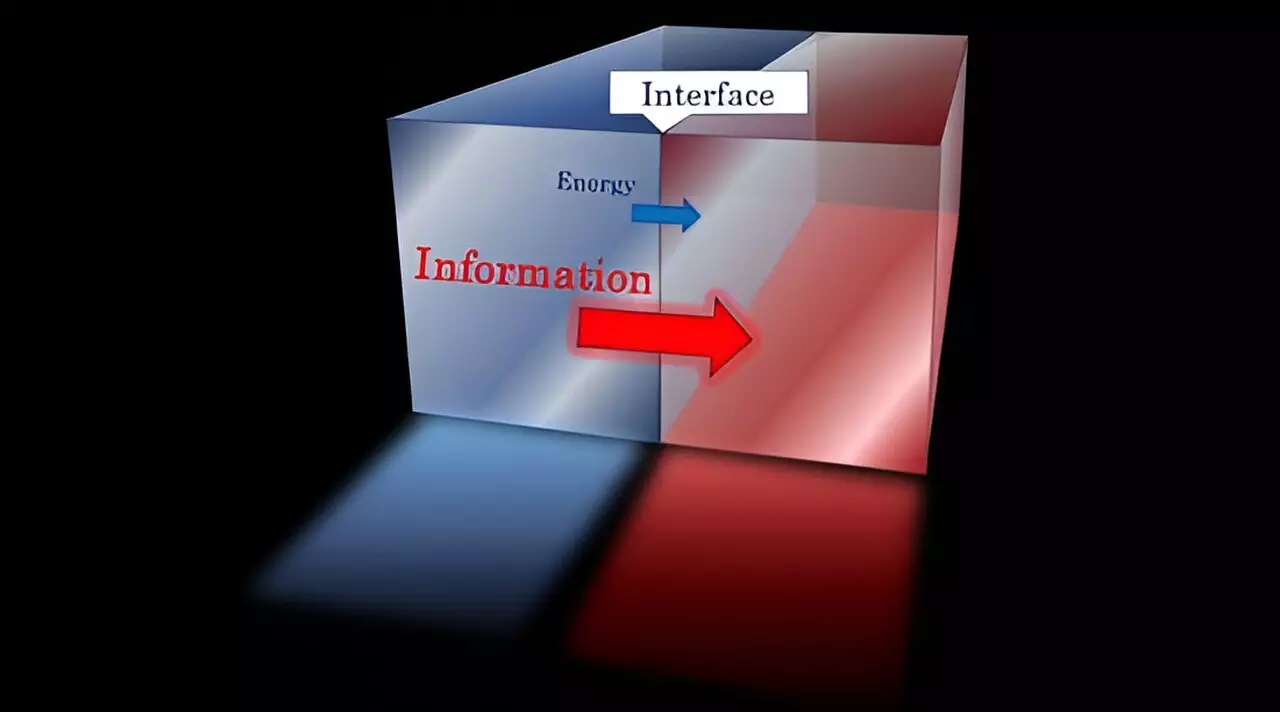Recent research conducted by an international team has illuminated a fascinating simplicity in the relationship between energy and information transmission across interfaces that connect disparate quantum field theories. Published in *Physical Review Letters* on August 30, this groundbreaking study introduces a new understanding of how these crucial physical quantities interact with one another. This understanding is particularly pertinent in fields like particle physics and condensed matter physics, where the behavior at an interface can have critical implications for the theoretical models we use to describe them.
In quantum field theories, interfaces act as the boundary separating different theoretical models that describe physical systems. The challenge, however, has long been the difficulty in quantitatively assessing how energy and information pass through these boundaries. Hirosi Ooguri from the Kavli Institute for the Physics and Mathematics of the Universe and Fred Kavli from the California Institute of Technology led the research, along with their collaborators, exploring theories characterized by two-dimensional space with scale invariance. Their findings reveal that the behavior of energy and information transmission can be encapsulated in elegant inequalities, hinting at deeper theoretical connections between these phenomena.
The study delineates a trio of relationships among three critical quantities: energy transfer rate, information transfer rate, and the dimensionality of the Hilbert space. Specifically, it presents the inequality: energy transmittance ≤ information transmittance ≤ size of the Hilbert space. These inequalities indicate a necessary correlative structure: if energy is to be transmitted across an interface, there must be an accompanying transmission of information, both of which depend on the availability of distinct quantum states. This result is remarkably significant; it not only establishes a clear linkage between energy and information but also emphasizes the necessity for a sufficiently rich set of states to facilitate transmission.
Implications for Theoretical Physics
One of the principal revelations of this research is that it identifies limits within which energy and information can be reliably transmitted in quantum systems. The researchers assert that no stronger inequalities exist beyond those they have already provided, marking a definitive boundary for future inquiries into this domain. The implications of their work extend beyond abstract theoretical constructs, as they could profoundly influence experimental designs aimed at probing quantum systems and interfaces.
This research not only challenges our understanding of quantum field theories but also opens up new avenues for exploration. By elucidating the intrinsic link between energy and information transmission across quantum interfaces, Ooguri, Kavli, and their collaborators have provided a foundational framework that could reshape both theoretical and experimental approaches within the wider realms of physics. As more investigations build on this important work, we may uncover further complexities that govern the quantum realm, paving the way for advancements in quantum technology and our comprehension of the universe itself.



Leave a Reply